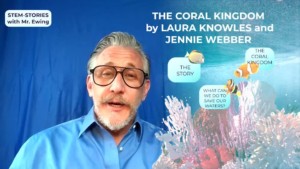New from Buck Institute: 6 Videos of PBL Units in Action

By: John Larmer. This piece was originally published by the Buck Institute for Education.
 Seeing video examples of high-quality projects is persuasive and instructive. In our workshops and presentations in the past, we’ve relied on a few “classics” from Deeper Learning network members Edutopia, EL Education, Envision Schools, High Tech High, or the occasional home-made video from a teacher or school we found online. Now we have created our own videos to better exemplify our Gold Standard PBL model in action.
Seeing video examples of high-quality projects is persuasive and instructive. In our workshops and presentations in the past, we’ve relied on a few “classics” from Deeper Learning network members Edutopia, EL Education, Envision Schools, High Tech High, or the occasional home-made video from a teacher or school we found online. Now we have created our own videos to better exemplify our Gold Standard PBL model in action.
Shot by veteran education film/video producer Steve Brown of Mobile Digital Arts, these videos have high production values and really capture the nuts and bolts of a PBL unit from beginning to end. Steve managed–as unobtrusively as possible in the real-time, natural habitat of the classroom–to get close to teacher-student and student-to-student interactions, and he interviewed the teachers explaining their projects. Each video shows four phases of the project: the launch (entry event and driving question); building knowledge and skills; developing products and answers to the driving question; and presenting products and answers to the driving question.
We think these videos will be very useful for teacher and school leader professional development purposes, and for explaining PBL to school/community stakeholders. So far they’ve been very well received in our presentations, because in addition to providing a detailed look at the PBL process, they make PBL seem do-able in “regular” classrooms and schools. The projects are not super-ambitious, complex, or lengthy. Their connection to content standards is clear. We also made sure the teachers and students shown are diverse, to help make the case that PBL works for all students, in all schools and settings.
I’d like to thank the principals at these schools who gave us the green light to visit the campus on five separate days, the teachers who opened up their classroom practice to us, and the students for being so cooperative and carrying on with their work as if a camera wasn’t pointing at them and a boom microphone wasn’t hovering over their heads. Thanks also are due to BIE’s Sarah Field, who did most of the management of this project.
The videos are from 7-10 minutes long, and you can find them now on our website and YouTube channel:
Taking Care of Our Environment Project
Transitional-Kindergarten interdisciplinary, with teacher (and BIE National Faculty member) Sara Lev at the Citizens of the World Charter School in Los Angeles. Students design tools and create presentations for older students about taking care of the school campus.
Tiny House Project
Grade 3 math and ELA, with teacher Cheryl Bautista at Katherine Smith Elementary School, San Jose, California. Students talk with local community residents and an architect to help them design tiny houses and present their models to the residents.
March Through Nashville Project
Middle school ELA/social studies, with teacher Kimberly Head-Trotter at McKissack Middle School, Nashville, Tennessee. 7th-grade students read fictional and informational text and connect national with local history by doing research and creating annotated videos about the civil rights movement in 1960s Nashville.
The Finance Project
High school math, with teacher (and BIE National Faculty member) Telannia Norfar at Northwest Classen High School, Oklahoma City, Oklahoma. Students meet members of the community who become their “clients” and advise them about their financial needs for college expenses, mortgages, and retirement.
Revolutions Project
High school world history, with teacher (and BIE National Faculty member) Erin Brandvold at Impact Academy of Arts and Technology, Hayward, California. 10th graders conduct a mock trial of various revolutions in history to determine if they actually helped the people of their nations.
Water Quality Project
High school chemistry, with teacher Rayhan Ahmed at Leaders High School, Brooklyn, New York. 11th graders learn about the water quality crisis in Flint, Michigan, and conduct lab experiments to determine what is the best corrosive inhibitor to prevent lead pipes from contaminating drinking water. They share their results with experts from various local organizations, write reports sent to grad students in Virginia and letters sent to government officials in Flint, and consider potential environmental racism issues in their own community.

This Fall: More Videos on Project Based Teaching Practices (& Our New Book)
We’ll be assembling footage from these video shoots to create several short clips (2-4 minutes long) explaining each of the seven Project Based Teaching Practices in our model for Gold Standard PBL. They will be released in September along with our new book, co-published with ASCD, Project Based Teaching: How to Create Rigorous and Engaging Learning Experiences, authored by Suzie Boss and me–sneak peek at the cover above.
For more, see:
- Tools for Project-Based Learning: The Landscape Today
- Defining (and Driving) Collaboration
- Project-Based Learning is a Spectrum
Stay in-the-know with all things EdTech and innovations in learning by signing up to receive the weekly Smart Update. This post includes mentions of a Getting Smart partner. For a full list of partners, affiliate organizations and all other disclosures, please see our Partner page.




0 Comments
Leave a Comment
Your email address will not be published. All fields are required.